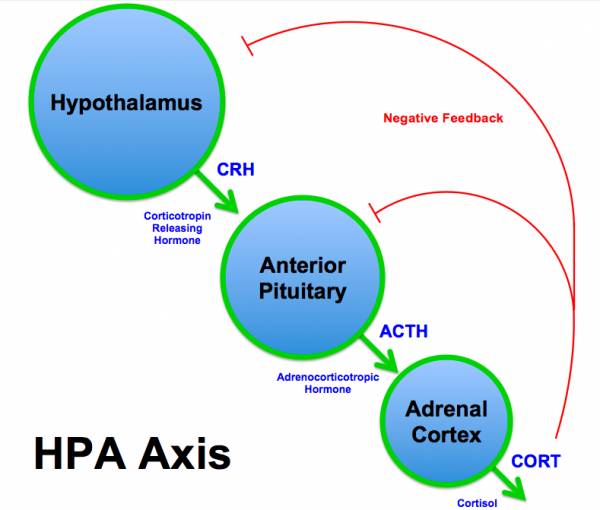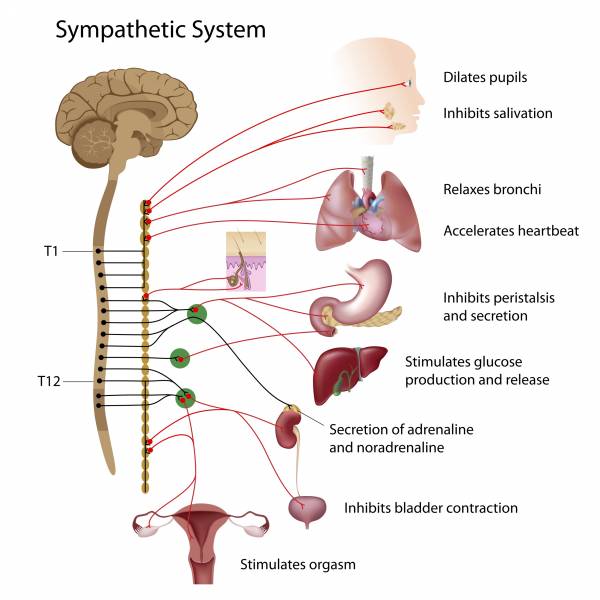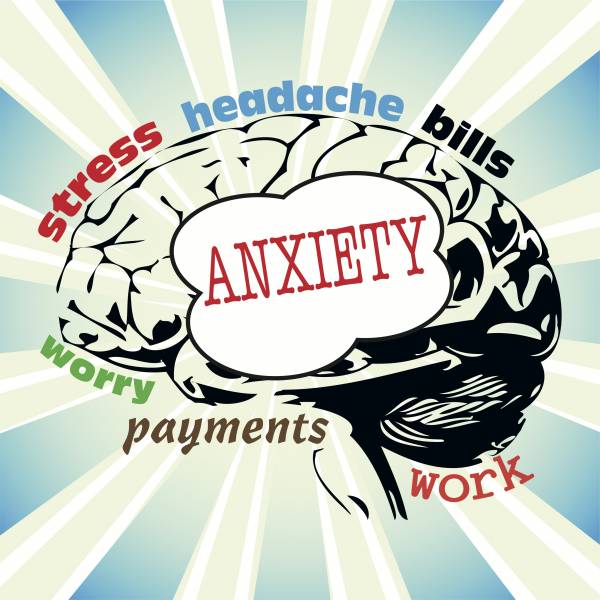As humans, we are all subjected to challenges, emotional, physical, metabolic, or psychological, that require our body to adapt and change in order to survive. Most people refer to these challenges as stress. These stresses can be acute or they can be chronic, with chronic being the more common in our modern culture.
When stress is acute, our bodies launch an “attack plan,” altering how our nervous system, hormones, and immune systems work in order to ensure our survival of the acute stressor. Our hypothalamus is the control center. It receives messages from within the body that tell it if we are indeed in stress, and then the hypothalamus coordinates the actions needed for the body to deal. Our emotions, skin temperature, pain level, and electrolyte balance are all things that the hypothalamus compares to our baseline. Basically, the hypothalamus functions as the epicenter for the mind-body connection. I’m telling you about the hypothalamus because it is from the hypothalamus that corticotropin-releasing hormone (CRH), the “master stress hormone,” is released in response to stressful stimuli.
We’ve talked about quite a few different hormones that are involved in the stress response but CRH is the hormone that really gets the whole stress response kicked into high gear. I’m going to elaborate on CRH’s role so we can better understand how our bodies respond to stress and how important it is for our health, fitness, and life goals to make sure we are not overtaxing our bodies and minds.
CRH functions as both a hormone and a neurotransmitter. CRH’s role as a hormone is to stimulate the anterior pituitary glad to release adrenocorticotropin hormone (ACTH). ACTH then reaches the adrenal cortex in the adrenal gland, which causes the synthesis of cortisol as well as several other hormones. So, when a stressful situation occurs, CRH goes up and eventually stimulates more cortisol production.

Cortisol, as we previously discussed, helps to maintain blood glucose levels and works with other hormones to increase blood pressure. This is done in an effort to supply glucose to the brain and organs like the heart, lungs, and skeletal muscles, and to defend against hypotension and decreased perfusion of blood to critical muscle and organs during a “fight or flight” situation. During events of acute stress, like a car accident, cortisol levels climb until the level is high enough to trigger CRH neurons. It also triggers the pituitary to decrease the release of both CRH and ACTH, therefore decreasing cortisol levels. This keeps cortisol from being overproduced.
However, when we are chronically stressed the CRH-ACTH-cortisol axis is thrown off and CRH and ACTH production is not down regulated, thus causing cortisol levels to be chronically elevated. This can lead to all sorts of issues like the redistribution of fat from the thighs and buttocks to the abdomen and upper back, insulin resistance, fluid retention, high blood pressure, decreased immune function, muscle and connective tissue wasting (joint pain, anyone?), and inhibited peptide and hormone production. Absolutely 0% of that is good for health or fitness.
CRH also functions as a neurotransmitter in that it stimulates the brain and spinal cord to activate the sympathetic nervous system (SNS), responsible for the fight or flight response. CRH inhibits the parasympathetic system, which is in charge of maintaining functions when the body is at rest. To put it simply, CRH causes all of the nerves needed to function in a stressful situation to be turned “on” and inhibits those nerves that are responsible for bodily functions that occur at rest.
 This stimulation of the SNS causes the adrenal medulla to release epinephrine and norepinephrine into circulation. The SNS will also stimulate organs like the heart, lungs, peripheral blood vessels, kidneys, pancreas, GI tract, and reproductive organs. The end result of this stimulation is to speed up the function of the heart and lungs. Heart rate increases, the force of the heart’s contraction rises, peripheral blood vessels contract, shunting of blood to the heart, brain, lungs, and skeletal muscles increases, and breathing depth and rate is also increased. In other words, you are ready to leap tall building in a single bound. In addition, the SNS stimulates the liver and adipose tissues to increase the breakdown of fat and glycogen to supply the body with more glucose. The SNS also stimulates the production of several hormones, like vasopressin, that increase blood pressure.
This stimulation of the SNS causes the adrenal medulla to release epinephrine and norepinephrine into circulation. The SNS will also stimulate organs like the heart, lungs, peripheral blood vessels, kidneys, pancreas, GI tract, and reproductive organs. The end result of this stimulation is to speed up the function of the heart and lungs. Heart rate increases, the force of the heart’s contraction rises, peripheral blood vessels contract, shunting of blood to the heart, brain, lungs, and skeletal muscles increases, and breathing depth and rate is also increased. In other words, you are ready to leap tall building in a single bound. In addition, the SNS stimulates the liver and adipose tissues to increase the breakdown of fat and glycogen to supply the body with more glucose. The SNS also stimulates the production of several hormones, like vasopressin, that increase blood pressure.
However, just like when cortisol remains high for too long, when the SNS is turned on too often, we run into trouble. SNS stimulation causes decreased contractility and emptying of the stomach. This can lead to a feeling of fullness and bloating. In the colon, increased motility can lead to diarrhea and poor absorption of nutrients. If this goes on long enough, inflammation of the colon can lead to conditions like irritable bowel syndrome, Crohn’s, and leaky gut syndrome. Leaky gut can cause all kinds of havoc that stems from the increased permeability of the intestinal lining. In addition, the immune system is dampened by chronic overstimulation of the SNS. Production of lymphocytes decreases, leukocyte numbers increase, and the activity of natural killer cells, a lymphocyte that rapidly destroys viruses and tumor cells, is decreased. This greatly increases the risk for diseases, infections, and cancers.
 CRH also impacts our behavior. CRH neurons are located in a few different areas in the brain. When CRH is injected into the brains of animals several things have been observed including: increased locomotion, an enhanced startle response, increased anxiety, increased fighting, decreased eating, and an avoidance of unfamiliar places. These animals also show signs of clinical depression like decreased interest in pleasurable activities, significant changes in weight and appetite, sleep disturbances, fatigue, and self-destructive behaviors.
CRH also impacts our behavior. CRH neurons are located in a few different areas in the brain. When CRH is injected into the brains of animals several things have been observed including: increased locomotion, an enhanced startle response, increased anxiety, increased fighting, decreased eating, and an avoidance of unfamiliar places. These animals also show signs of clinical depression like decreased interest in pleasurable activities, significant changes in weight and appetite, sleep disturbances, fatigue, and self-destructive behaviors.
As you can see, as a result of CRH production, cortisol and the SNS work together to get our bodies ready to rock and roll. However, too much stress and too much CRH leads to big trouble. It’s no surprise that people who are chronically stressed are depressed, overweight, tired, and at risk for all types of diseases. We all should take a step back, think about our lives and our stress levels, and find ways where we can eliminate things that only complicate our lives. This should include a serious evaluation of your workout, your commute, the messiness of your surroundings, what you put into your body, and myriad other things. Cut back, organize, and simplify as much as you can. Your mind and body will thank you for it.
References:
1. The Institute of Functional Medicine, Textbook of Functional Medicine, (Gig Harbor, WA: 2010).
Photo 1 by Boghog [Public domain], via Wikimedia Commons.
Photo 2 by BrianMSweis (Own work) [CC-BY-SA-3.0], via Wikimedia Commons.
Other photos courtesy of Shutterstock.






